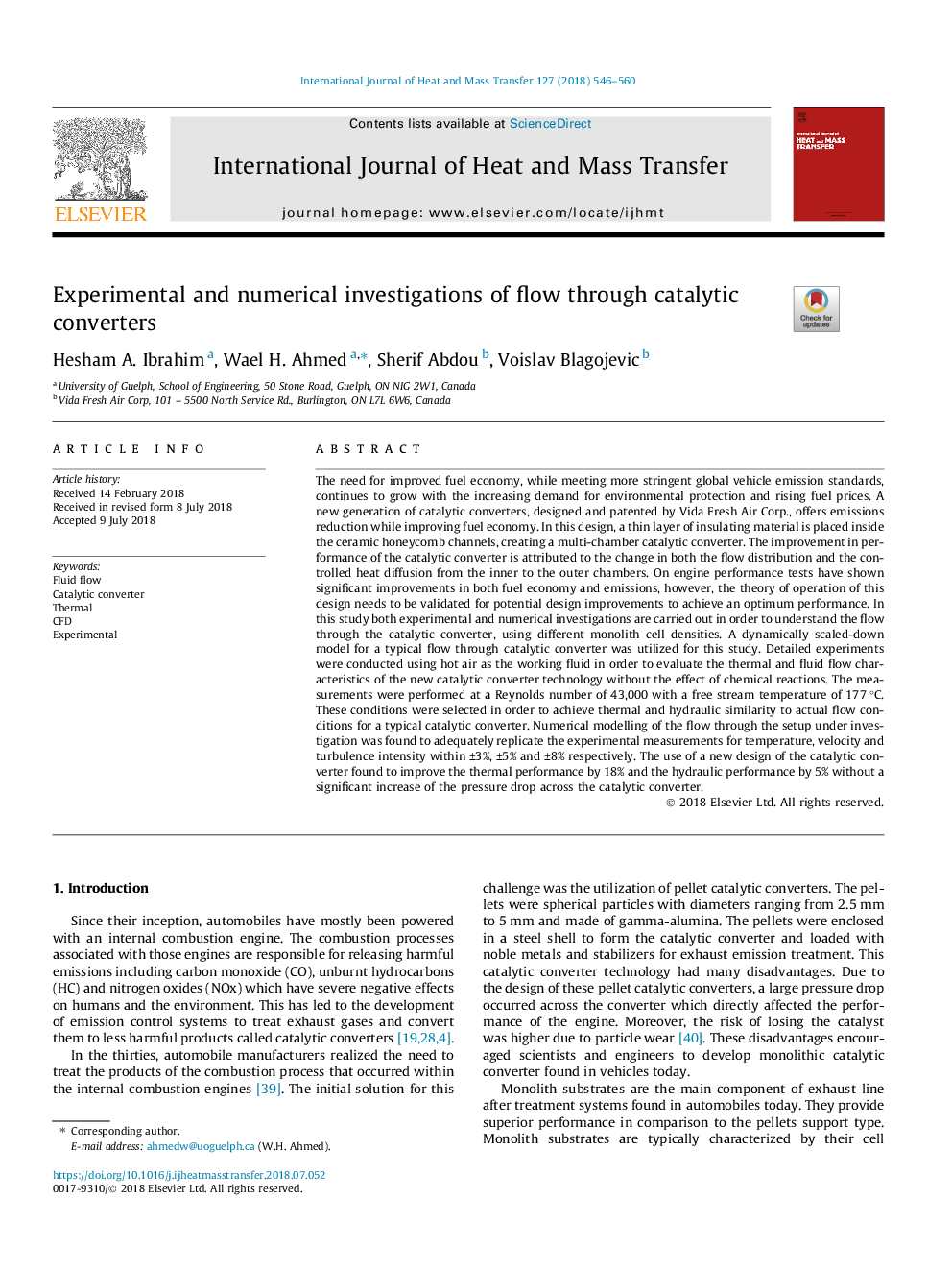| کد مقاله | کد نشریه | سال انتشار | مقاله انگلیسی | نسخه تمام متن |
|---|---|---|---|---|
| 7053693 | 1458011 | 2018 | 15 صفحه PDF | دانلود رایگان |
عنوان انگلیسی مقاله ISI
Experimental and numerical investigations of flow through catalytic converters
ترجمه فارسی عنوان
بررسی تجربی و عددی جریان از طریق مبدل کاتالیزوری
دانلود مقاله + سفارش ترجمه
دانلود مقاله ISI انگلیسی
رایگان برای ایرانیان
کلمات کلیدی
موضوعات مرتبط
مهندسی و علوم پایه
مهندسی شیمی
جریان سیال و فرایندهای انتقال
چکیده انگلیسی
The need for improved fuel economy, while meeting more stringent global vehicle emission standards, continues to grow with the increasing demand for environmental protection and rising fuel prices. A new generation of catalytic converters, designed and patented by Vida Fresh Air Corp., offers emissions reduction while improving fuel economy. In this design, a thin layer of insulating material is placed inside the ceramic honeycomb channels, creating a multi-chamber catalytic converter. The improvement in performance of the catalytic converter is attributed to the change in both the flow distribution and the controlled heat diffusion from the inner to the outer chambers. On engine performance tests have shown significant improvements in both fuel economy and emissions, however, the theory of operation of this design needs to be validated for potential design improvements to achieve an optimum performance. In this study both experimental and numerical investigations are carried out in order to understand the flow through the catalytic converter, using different monolith cell densities. A dynamically scaled-down model for a typical flow through catalytic converter was utilized for this study. Detailed experiments were conducted using hot air as the working fluid in order to evaluate the thermal and fluid flow characteristics of the new catalytic converter technology without the effect of chemical reactions. The measurements were performed at a Reynolds number of 43,000 with a free stream temperature of 177â¯Â°C. These conditions were selected in order to achieve thermal and hydraulic similarity to actual flow conditions for a typical catalytic converter. Numerical modelling of the flow through the setup under investigation was found to adequately replicate the experimental measurements for temperature, velocity and turbulence intensity within ±3%, ±5% and ±8% respectively. The use of a new design of the catalytic converter found to improve the thermal performance by 18% and the hydraulic performance by 5% without a significant increase of the pressure drop across the catalytic converter.
ناشر
Database: Elsevier - ScienceDirect (ساینس دایرکت)
Journal: International Journal of Heat and Mass Transfer - Volume 127, Part B, December 2018, Pages 546-560
Journal: International Journal of Heat and Mass Transfer - Volume 127, Part B, December 2018, Pages 546-560
نویسندگان
Hesham A. Ibrahim, Wael H. Ahmed, Sherif Abdou, Voislav Blagojevic,
